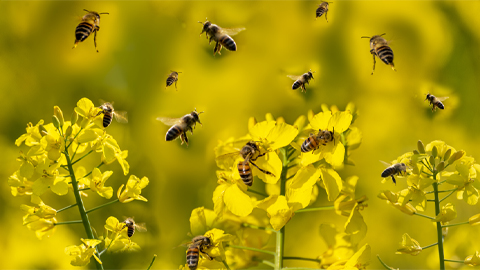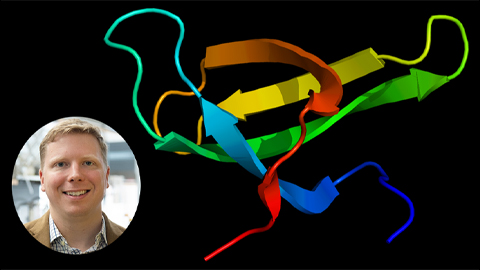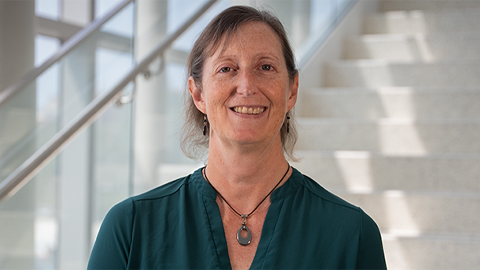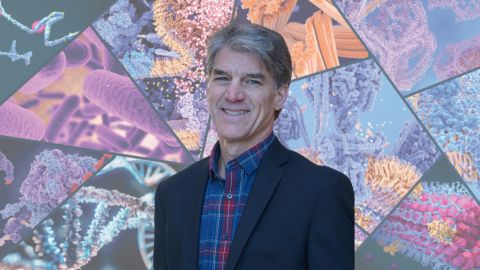Chemicals emitted from household objects alter children’s microbiomes
The chemicals in our environments, while sometimes useful, can also hurt us. Materials like asbestos fibers can move through the air and into the lungs in the form of tiny particles, causing long-term damage to human tissues. But free-floating, harmful chemicals are also emitted from the furniture, wallpaper, flooring, and household items around us. And these chemicals are entering our bodies, damaging them in many different ways.

In a recent paper published in Environmental Science and Technology Letters, researchers from Duke University found a connection between bacteria and fungi in the digestive tracts of children and the amount of volatile household chemicals found in their homes. A healthy gut microbiome has been linked to improved nutrient absorption and stronger immunity, among other few benefits. An imbalance in the flora of the gut has been linked to gastrointestinal conditions, obesity, diabetes, and more.
Children's health is an important area of research for studying the effects of harmful chemicals, because young children are typically more exposed to chemicals than older children and adults. Young babies and toddlers crawl, exposing them to more surfaces, generating more dust for inhalation, and they are more likely to put objects into their mouths. Children are also at a higher risk for impacts of harmful chemicals, since they are still in early, fragile stages of development.
The thousands of chemicals present as gases in human environments are called volatile organic compounds, or VOCs. These chemicals are given off by common building materials, furnishings such as wallpapers or flooring, cleaning materials, toiletries, and even by cooking without proper ventilation. Vinyl wallpaper and vinyl flooring contain retardants which reduce the threat of fire in the home, but also give off VOCs that enter our lungs or settle on food surfaces.
VOCs are also found in outdoor air, but at much lower concentrations. A subgroup of VOCs with a higher molecular weight and boiling point temperature are called semi-volatile organic compounds, or SVOCs. Some examples of SVOCs include flame retardants, plasticizers (substances added to material to make them softer and more flexible), and pesticides.
Volatile compounds are a ubiquitous part of our indoor environments. Extremely small quantities of dangerous inhalants settle on surfaces all around you, and can be inhaled and carried into the lungs on tiny dust particles, or settle on surfaces used for food preparation and accidentally eaten. Intense household cleaning can lead to a build up of potentially dangerous chemicals, reducing beneficial microbial communities found around our homes – even while reducing harmful bacteria and viruses.
These chemical particles enter our bodies through breathing the air around us, eating food that particles may have settled on, and through skin contact from touching materials in our homes. Health effects associated with VOCs and SVOCs include allergies, altered semen quality, lower birth weight and delayed development in children, and even cancer. But what are the specific communities of bacteria that are affected by chemical ingestion, and how could these levels affect human health?
During their study, the researchers collected urine and fecal samples from young children (between the ages of 3 and 6) and analyzed them for SVOCs, bacteria, and fungi. The researchers could detect beneficial bacteria as well as a snapshot of the microbiome of each child. Their analysis allowed them to understand which microbes were living happily in each child's gut, helping digest their food and keeping them healthy, and which bacteria were missing.
The researchers found a relationship between the amount of bacteria and fungi in the gut microbiome and the level of SVOC exposure the children experienced, with some gut microbes declining in abundance with increasing exposure to these indoor chemicals. The most common types of bacteria, such as Clostridiales and Bifidobacteroidiales, found in the human gut did not seem to be heavily affected by the presence of SVOCs, indicating that the largest drivers of microbiome health are safe from harm from indoor chemicals.
However, less common but equally important taxa such as Thermogemmatisporales, Stigonematales, and Legionelles – which play a pivotal role in nutrient absorption in humans – were harmed by the presence of PFAS, a type of man-made chemical used in manufacturing, including food packaging, commercial household products such as polish, wax, cleaning products, and even drinking water. PFAS, many of which are types of SVOCs, are compounds that do not break down and can build up in our homes and our bodies over time.
The important bacteria species in these taxa such as Bacteroides, Prevotella, and Ruminococcus are only present in small numbers in the gut and so may be much more sensitive to chemical ingestion, with SVOCs lowering the diversity of life in the digestive system. Ruminococcusis responsible for protecting our immune system and regulating our metabolism. Bacteroides responds to rich environments, breaking nutrients down for easy digestion. At normal, healthy levels, these bacteria are responsible for keeping our systems working properly – at extremely high or very low levels, they can cause much more harm. Overall, researchers found that these beneficial bacteria species are reduced with increased accumulation of SVOCs in the body, potentially reducing overall human health and causing an imbalance of bacteria in the gut.
The results of the study found that there is a connection between the amount of SVOCs and a decline in gut microbiota, leading to a potentially less effective immune system, poor digestion, and the more severe effects of an imbalanced microbiome. Much of the work around ingested SVOCs and their effect on bacteria imbalance in the gut has previously been performed in experiments on mice. This study was extremely comprehensive, giving us a much clearer understanding of the connections between a loss diversity of gut microbes and the everyday chemical compounds that work their way into our systems in the human body.
Considering the potential for SVOCs to build up in our bodies over time, since many of us are subject to prolonged exposure to them in our homes, it is crucial to understand more about SVOCs and human health so that we can work on solutions.
Enjoy reading ASBMB Today?
Become a member to receive the print edition four times a year and the digital edition weekly.
Learn moreGet the latest from ASBMB Today
Enter your email address, and we’ll send you a weekly email with recent articles, interviews and more.
Latest in Science
Science highlights or most popular articles

Becoming a scientific honey bee
At the World Science Forum, a speaker’s call for scientists to go out and “make honey” felt like the answer to a question Katy Brewer had been considering for a long time.

Mutant RNA exosome protein linked to neurodevelopmental defects
Researchers at Emory University find that a missense mutation impairs RNA exosome assembly and translation and causes neurological disease.

Study sheds light on treatment for rare genetic disorder
Aaron Hoskins’ lab partnered with a drug company to understand how RNA-targeting drugs work on spinal muscular atrophy, a disorder resulting from errors in production of a protein related to muscle movement.

Examining mechanisms of protein complex at a basic cell biological level
Mary Munson is co-corresponding author on a study revealing functions and mechanisms of the exocyst that are essential to how molecules move across a membrane through vesicles in a cell.

Breaking through limits in kinase inhibition
Paul Shapiro, the first speaker on ASBMB Breakthroughs, a new webinar series highlighting research from ASBMB journals, discussed taking ideas and discoveries from basic science research toward clinical applications.

How opposing metabolic pathways regulate inflammation
Researchers use cybernetics to understand what happens when two acids produced by macrophages compete for binding sites on the enzyme that converts them to active products.


